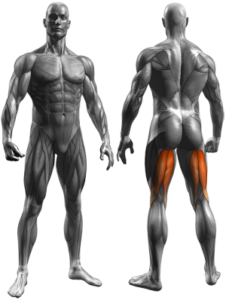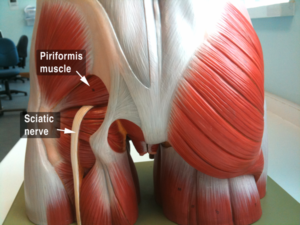
The Missing Link in Hamstring Injuries: A Physio's Guide to Low Back Dysfunction (ft. Cyril Rioli)
Why Hamstring Injuries Persist: A Clinical Blind Spot
Hamstring injuries are frustratingly common. Despite the immense time and effort we devote to prevention and rehab, they remain a persistent problem for athletes and weekend warriors alike.
In the Australian Football League (AFL) alone, new hamstring injury rates have barely shifted for the best part of six years.
This lack of progress points to a critical gap in our approach. We must be missing a key piece of the puzzle.
As a Physiotherapist, I've refined my pattern recognition skills by seeing countless cases of dysfunction. Often, the root cause isn't local to the hamstring itself.
Clinically, I believe we haven't solved the hamstring injury puzzle because we too often neglect the lower back.
In this article, I'll use the case of former AFL star Cyril Rioli to highlight a commonly overlooked factor in hamstring rehab and prevention. Let's explore why your lower back could be the key to ending your hamstring pain.
Cyril Rioli's Hamstring Injury History: A Case Study
Cyril Rioli was a joy to watch—insanely quick, agile, and gifted. However, his career was hampered by persistent hamstring injuries.
Over six years, he suffered seven separate hamstring tears.
After an injury-free first season in 2008, his hamstring struggles began. Here's a breakdown:

The Hawthorn medical team tried several strategies:
- Altering his running technique (here)
- Changing his on-field role to be less demanding (here)
- More targeted strength work for his trunk, hips, and legs (here)
It was only after doubling down on lower-body strength that Cyril finally overcame his injuries, remaining hamstring-free until his retirement in 2018.
This is a crucial point: while strength helped, it may have simply created a bigger buffer against an underlying dysfunction, rather than solving the root cause.
Understanding the Hamstrings: Anatomy and Function
The hamstrings are three muscles at the back of your thigh (Biceps Femoris, Semimembranosus, Semitendinosus). They originate from your sit bones (ischial tuberosity) and insert below the knee.

What Do the Hamstrings Do?
Their primary functions are to bend the knee and extend the hip. They also play a key role in controlling the trunk when you lean forward.
The Scale of the Hamstring Injury Problem in Sport
In the AFL, recovery times and re-injury rates have plateaued for nearly a decade. This stagnation persists despite athletes having access to world-class conditioning and rehab expertise.
On any given week, the official AFL injury list features 20-25 players sidelined with hamstring issues. It's a revolving door of dysfunction.
Common Hamstring Injury Causes and Risk Factors
If we polled health professionals on the cause of hamstring injuries, we'd get no clear consensus. We know a lot about risk factors, but not the fundamental why.
Common risk factors include:
- Sports involving sprinting and running
- Inadequate warm-up
- Previous hamstring injury (the biggest predictor)
- Poor hamstring strength and flexibility
- Gluteal muscle weakness
- Fatigue
Standard Hamstring Injury Treatment
Typical hamstring rehab follows a logical path:
- Pain and swelling reduction
- Strengthening the hamstrings, glutes, and core
- Stretching and flexibility work
- A graduated return to sport
While this approach often gets athletes back on the field, it may be missing the bigger picture. We need to ask: why did the hamstring fail in the first place?
What I'm Finding Clinically: The Missing Link
As a physio, I can step back and assess the whole system. Through years of clinical pattern recognition, one factor is intrinsically linked to recurrent hamstring issues: low back dysfunction.
The Low Back's Critical Role in Hamstring Injury
I've found the spine to be a common culprit in many peripheral injuries, from knee tendonitis to tennis elbow. The hamstring is no different.
For years, every hamstring injury I've treated has had accompanying, often subtle, low back dysfunction. This isn't always about overt pain, but stiffness and poor control you have to look for.
1. Joint Stiffness and Neural Tension
Stiffness often centres around the lower back—the origin of the Sciatic Nerve. This nerve travels down the back of your leg, directly through the hamstrings.

If the nerve is restricted at the spine, it can't move freely ("floss"). This can create mechanical dysfunction down the leg, and we often mistake this sciatic nerve tightness for hamstring tightness.
Quick Test: Free Your Sciatic Nerve
- Stand and do a typical hamstring stretch (heel on a bench, lean forward). Note the feeling and range.
- Lie down and use a foam roller to gently press into any stiff spots in your lower back for a few minutes.
- Re-test the hamstring stretch. It should feel immediately looser.
This demonstrates how freeing the nerve at its origin improves hamstring function.
2. Poor Spinal Stabilisation (Not Just Core Strength)
This is a vital distinction. Stabilisation is about how well your trunk muscles activate during movement, not just how strong they are in isolation (like holding a plank).
Clinically, a poorly stabilised spine will recruit other muscles—like the hamstrings—to help create stability. The body sacrifices limb function to protect the spine. This puts the hamstrings under constant, unnatural load.
Quick Test: Activate Your Stabilizers
- Lie on your back, hip and knee bent to 90 degrees. Straighten your knee and note the range.
- Now, consciously brace your trunk muscles as if preparing for a light punch to the stomach.
- Re-straighten your leg while maintaining that brace. You should achieve greater range.
This shows how proper spinal bracing allows the hamstrings to function normally.
The Root Cause: Poor Posture and Spinal Shapes
So, what causes this back stiffness and deactivation? The answer, while unsexy, is evident: prolonged poor posture, particularly slouched sitting.
Slouching forces a constant hinge in your lower back, leading to adaptive stiffness over time. It's also a passive position, teaching your core stabilisers to switch off.
You can have a strong core, but if you spend all day in passive, slouched positions, your trunk can still become dysfunctional.
Evidence in Plain Sight: Postural Analysis
While internal dysfunction is hard to photograph, its cause is not. It's easy to find images of Cyril Rioli in poor resting spinal shapes, slouching in chairs.

Compare this to someone known for good posture, like model Jennifer Hawkins. The difference in their default spinal alignment is stark.

These daily "spinal shapes" create the dysfunction that sets the stage for hamstring injury.
Conclusion and Actionable Steps
The evidence is compelling: the lower back is a critical factor in solving the hamstring injury puzzle.
Improving low back function won't replace local hamstring rehab, but it can:
- Prevent hamstring injuries from occurring.
- Speed up recovery time.
- Drastically reduce the risk of re-injury.
If you're struggling with hamstring issues, I urge you to look upstream. Work with a health professional to assess and treat your lower back function. Free up your spine, re-learn how to brace it effectively, and be mindful of your daily postures.
It might just be the missing piece you've been searching for.
What are your thoughts on the back's role in hamstring injury?
Need Personalised Guidance?
If you'd like help trying to uncover the underlying cause of your pain or dysfunction, consider booking an online Telehealth consultation with Grant here!

